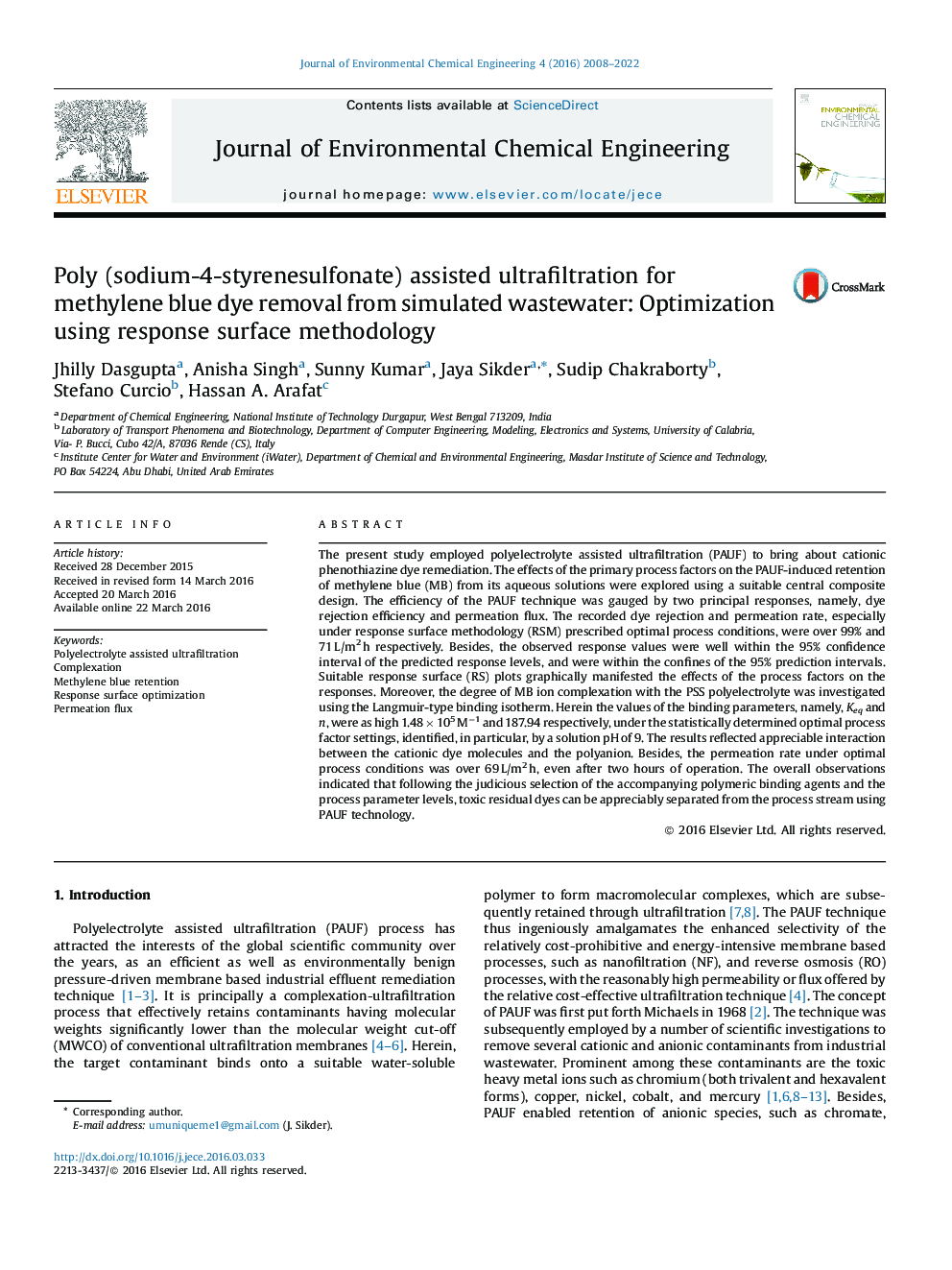| کد مقاله | کد نشریه | سال انتشار | مقاله انگلیسی | نسخه تمام متن |
|---|---|---|---|---|
| 221683 | 464263 | 2008 | 15 صفحه PDF | دانلود رایگان |

• Polyelectrolyte assisted ultrafiltration (PAUF) was used to retain methylene blue.
• The principal process factors were optimized using response surface methodology.
• Dye rejection as high as 99% and permeate flux over 71 L/m2 h were thus achieved.
• The observed data were well within the 95% prediction intervals.
• The Langmuir-type binding isotherm gauged the degree of dye binding to the polymer.
The present study employed polyelectrolyte assisted ultrafiltration (PAUF) to bring about cationic phenothiazine dye remediation. The effects of the primary process factors on the PAUF-induced retention of methylene blue (MB) from its aqueous solutions were explored using a suitable central composite design. The efficiency of the PAUF technique was gauged by two principal responses, namely, dye rejection efficiency and permeation flux. The recorded dye rejection and permeation rate, especially under response surface methodology (RSM) prescribed optimal process conditions, were over 99% and 71 L/m2 h respectively. Besides, the observed response values were well within the 95% confidence interval of the predicted response levels, and were within the confines of the 95% prediction intervals. Suitable response surface (RS) plots graphically manifested the effects of the process factors on the responses. Moreover, the degree of MB ion complexation with the PSS polyelectrolyte was investigated using the Langmuir-type binding isotherm. Herein the values of the binding parameters, namely, Keq and n, were as high 1.48 × 105 M−1 and 187.94 respectively, under the statistically determined optimal process factor settings, identified, in particular, by a solution pH of 9. The results reflected appreciable interaction between the cationic dye molecules and the polyanion. Besides, the permeation rate under optimal process conditions was over 69 L/m2 h, even after two hours of operation. The overall observations indicated that following the judicious selection of the accompanying polymeric binding agents and the process parameter levels, toxic residual dyes can be appreciably separated from the process stream using PAUF technology.
Journal: Journal of Environmental Chemical Engineering - Volume 4, Issue 2, June 2016, Pages 2008–2022